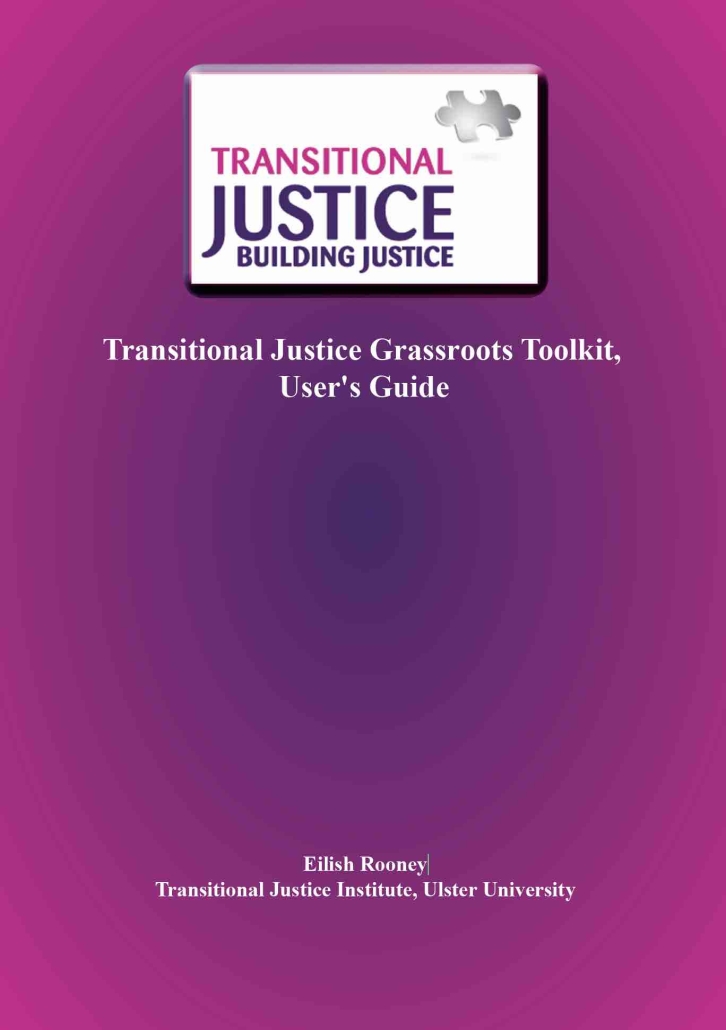Transitional Justice Grassroots Toolkit, User Guide
This user’s guide is another tangible outcome of co-operation between Bridge of Hope, a programme of Ashton Community Trust, local groups in North and West Belfast, and the TJI at the University of Ulster. Bridge of Hope led the way in 2011–12 with a transitional justice pilot programme. At that time, community leaders from Mount Vernon, New Lodge and Tigers Bay worked together with a common purpose. Participants understood how local people are directly affected by efforts to deal with the past and by plans to build a better future. The circumstances of local communities should be part of making any plan work. Bridge of Hope worked with the TJI to enable local engagement with international experience and research.
The results of the pilot programme were reported in Transitional Justice Grassroots Engagement (Rooney, 2012; www.thebridgeofhope.org). It is worth reading. It tells of the diversity of experience of transitional justice in North Belfast working-class communities. It affirms the grounded value of equality and human rights principles in practice. It outlines a keen interest in the origins of transitional justice and a local curiosity about how people in different conflicts deal with the past. The report describes the willingness of community activists, victims and survivors, ex-prisoners, former combatants, police personnel, clergy, and academics to engage in critical conversations about the distance travelled from the conflict, the way forward, and how others have made the journey.
From this engagement between Bridge of Hope and the TJI, Eilish Rooney (2012) devised and designed the Transitional Justice Grassroots Toolkit (www.thebridgeofhope.org). The toolkit was tested by women from the Falls and Shankill women’s centres in a residential and round-table programme the following year. The women’s programme ended with a session where each woman made a jigsaw piece to represent her transitional justice journey. At Ashton’s FabLab the creative jigsaw pieces were made into a durable artwork. This now hangs in the offices of the Victims and Survivors Service in Belfast city centre.
Over the years we have been heartened to learn that our toolkit is adaptable for people in other conflicts. We hope that this guide further enables a wider understanding of the value of grassroots engagement. Its primary aim is to have grassroots experience included in decisionmaking about a past and future that we all share.

Owner/Developer : Ulster University
Language : English

